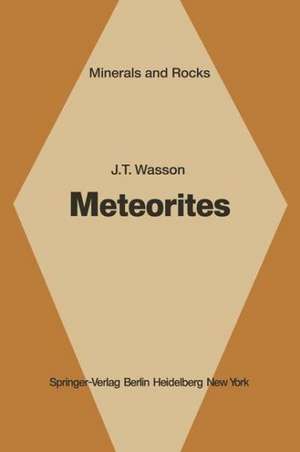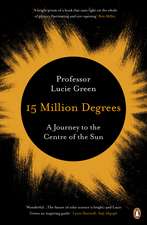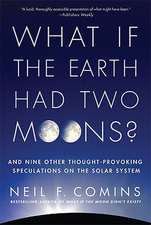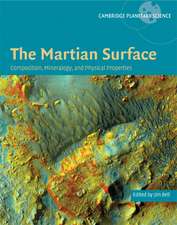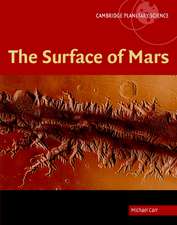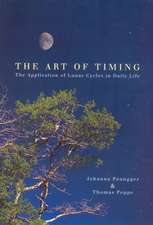Meteorites: Classification and Properties: Minerals, Rocks and Mountains, cartea 10
Autor J. T. Wassonen Limba Engleză Paperback – 7 dec 2011
Din seria Minerals, Rocks and Mountains
-
 Preț: 378.71 lei
Preț: 378.71 lei - 15%
 Preț: 692.56 lei
Preț: 692.56 lei - 15%
 Preț: 637.46 lei
Preț: 637.46 lei -
 Preț: 386.00 lei
Preț: 386.00 lei - 15%
 Preț: 639.25 lei
Preț: 639.25 lei - 18%
 Preț: 786.66 lei
Preț: 786.66 lei - 15%
 Preț: 648.42 lei
Preț: 648.42 lei - 15%
 Preț: 645.79 lei
Preț: 645.79 lei - 15%
 Preț: 640.71 lei
Preț: 640.71 lei -
 Preț: 384.70 lei
Preț: 384.70 lei - 15%
 Preț: 635.65 lei
Preț: 635.65 lei - 18%
 Preț: 897.14 lei
Preț: 897.14 lei - 18%
 Preț: 892.74 lei
Preț: 892.74 lei -
 Preț: 379.86 lei
Preț: 379.86 lei - 15%
 Preț: 697.97 lei
Preț: 697.97 lei -
 Preț: 382.75 lei
Preț: 382.75 lei - 15%
 Preț: 637.78 lei
Preț: 637.78 lei -
 Preț: 386.61 lei
Preț: 386.61 lei -
 Preț: 383.12 lei
Preț: 383.12 lei
Preț: 641.38 lei
Preț vechi: 754.56 lei
-15% Nou
Puncte Express: 962
Preț estimativ în valută:
122.72€ • 128.82$ • 101.87£
122.72€ • 128.82$ • 101.87£
Carte tipărită la comandă
Livrare economică 10-24 aprilie
Preluare comenzi: 021 569.72.76
Specificații
ISBN-13: 9783642658655
ISBN-10: 3642658652
Pagini: 332
Ilustrații: X, 318 p.
Dimensiuni: 152 x 229 x 17 mm
Greutate: 0.45 kg
Ediția:Softcover reprint of the original 1st ed. 1974
Editura: Springer Berlin, Heidelberg
Colecția Springer
Seria Minerals, Rocks and Mountains
Locul publicării:Berlin, Heidelberg, Germany
ISBN-10: 3642658652
Pagini: 332
Ilustrații: X, 318 p.
Dimensiuni: 152 x 229 x 17 mm
Greutate: 0.45 kg
Ediția:Softcover reprint of the original 1st ed. 1974
Editura: Springer Berlin, Heidelberg
Colecția Springer
Seria Minerals, Rocks and Mountains
Locul publicării:Berlin, Heidelberg, Germany
Public țintă
ResearchCuprins
I. Introduction: Meteorites as Probes of Processes Occurring Very Early in the History of the Solar System.- II. Classification of Meteorites.- A. Introduction.- B. Classification of Silicate-Rich Meteorites.- C. Classification of Metal-Rich Meteorites.- D. Summary.- III. The Study of Meteorites: Sources, Bibliographies, and History.- IV. Bulk Composition.- V. Mineralogy and Phase Composition.- A. General.- B. Pressure-Indicating Mineral Systems.- C. Temperature-Indicating Mineral Systems.- D. The System Fe-FeO-MgO-SiO2-O2 and Prior’s Rules.- E. The Fe-Ni System and Cooling Rates.- F. Other Mineral Systems.- VI. Petrology.- A. Petrographic Descriptions of Individual Meteorites.- B. Metallographic and Metallurgical Studies of Metal-Rich Meteorites.- C. Chondrules, Chondrite Petrology, and Metamorphism.- D. Calcium-Aluminium-Rich Inclusions.- E. Differentiated Silicate-Rich Meteorites.- F. Shock and Brecciation.- VII. Trace Elements.- A. Introduction: Mean Solar-System Abundances.- B. Partition between Coexisting Phases; Studies of Rare-Earth Elements.- C. Volatile Elements.- D. Refractory Elements.- E. Siderophilic Elements.- F. Miscellaneous Elements.- VIII. Stable Isotopes: Elements Other than Rare Gases.- IX. Stable Isotopes of the Rare-Gas Elements and Related Particle-Track Studies.- X. Primordial Radionuclides and Associated Chronologies.- A. Introduction.- B. Formation and Metamorphism Ages.- C. Formation Intervals.- XI. Breakup and Accretional History of Parent Bodies, Meteoroid Shape and Erosion, and Terrestrial Ages of Meteorites.- A. Cosmic-Ray Interactions.- B. Erosion and Preatmospheric Shapes.- C. Exposure-Age Distributions and Their Significance.- D. Accretional History.- E. Terrestrial Ages.- XII. Orbits.- XIII. Fall and Recovery.- XIV. Morphology andMacrostructure.- XV. Organic Matter.- XVI. Magnetic Properties.- XVII. Miscellaneous Physical Studies.- A. Density and Porosity.- B. Mechanical Properties.- C. Thermal Properties.- D. Electrical Properties.- E. Optical Properties.- XVIII. An Example of the Interpretation of Meteorite Properties: The Origin of Ordinary Chondrites.- A. Introduction.- B. Formation Ages and Intervals.- C. On the Number, Size, and Location of the Parent Bodies.- D. Evidence for Metamorphism.- E. Fractionation of Highly Volatile Elements.- F. Metamorphic Reheating.- G. Genomict Chondrites and Solar-Type Rare Gases.- H. Siderophilic-Element and Oxidation-State Fractionations.- I. Chondrule Formation.- J. Fractionation of Moderately Volatile Elements.- K. Fractionation of Refractory Elements.- L. Summary: Temperature History of the Nebula.- References.- Appendix I: Glossary.- Appendix II: Lists of Classified Meteorites.- A. Introduction: Alphabetical List of Well-Classified Meteorites.- B. Listing of Chondrites by Chemical Group and Petrologic Type.- C. Listing of Differentiated Silicate-Rich Meteorites by Chemical Group.- D. Listing of Differentiated Metal-Rich Meteorites by Chemical Group.
